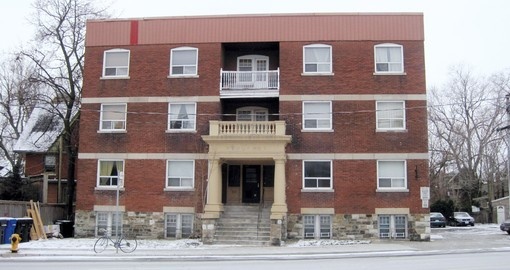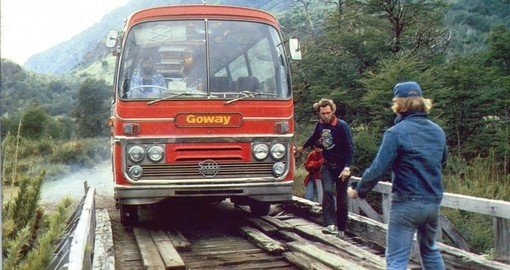Goway's Early Days
This is a reprint of an article that appeared in Globetrotting Magazine, Goway's 40th Anniversary edition - Winter 2010.
Also, see "The World of Travel in 1970" which appeared in the same edition.
Goway Travel was started by Bruce Hodge, a former Reserve Bank of Australia Economist, who in 1970 had just spent 2 ½ years in the tour industry in England and Europe. Why did he choose to open in Toronto? His former rugby coach from Australia was now living there and he had a free bed on arrival this person had once drawn a 500-mile circle on a map showing the proximity of most of North America’s largest cities.
In the first year, Bruce Hodge ran Goway on his own from a shared (with 3 other guys) apartment. To make ends meet Bruce also worked in a peanut butter factory in the evening.
In 1971 Bruce moved downtown to 53 Yonge Street sharing a “grotty” upstairs office. The mailing address, Bruce thought, would impress non-Torontonian Canadians and help with credibility. On the ground floor was Websters Travel, the oldest agency in Canada and behind them was the fledging I.T.C. operator Canadian World Travel. This company and Suntour, both of which don’t exist anymore, are considered the “ground zero” of the Inclusive Tour Charter business in Canada.
Competitors have always been concerned about Goway. In the first 3 months of Bruce’s arrival in Toronto, he had personal visits from the immigration department, the Consumer Protection Board, the BBB and two “supposed” travel industry watchdogs.
Goway’s first tour across Canada was in a station wagon that became Bruce Hodge’s personal vehicle at the end of that summer.
Goway's first three-month overland journey in South America between Bogota and Rio de Janiero was by public transport as Goway’s own bus, coming from Britain, had not arrived on time.
Over the years many “parts” had to be flown in to repair Goway’s vehicles that had broken down somewhere in the Americas. Actual engines were flown to Bogota in Colombia and Fairbanks in Alaska. This problem ultimately persuaded the company to get its IATA license so it could access discounted airfares and be able to transport parts as checked luggage.
Goway’s second bus for South America was built in Canada. At the time it was one of only two Canadian-registered vehicles travelling outside of North America. Also, Goway was the only overland tour operator travelling through Argentina during the Falklands War as competitors used British vehicles.
Goway’s first airline reservation system, called Pegasus and backed by CP Air (now defunct) was chosen because it provided word processing capabilities.
When Goway decided to become a serious player in the Australian and South Pacific market they produced a 12-page brochure. Their biggest competitor at the time was Jetset Tours, with a 300-page brochure. Jetset had offices in at least 6 cities in America and two in Canada. Jetset has now been out of business for a very long time.
Then and Now
- Goway’s first reservations were made by telegram. As the cost was determined “by a number of words” a code was developed to save money. The company then invested in a telex machine which in turn gave way to facsimiles (faxes). Today all reservations are done over the internet.
- Confirmations, invoices, travel vouchers, etc. were all typed manually. Since those days, Goway has invested in three computer reservation systems. To stay ahead of the curve Goway is looking for its 4th reservation system.
- Travel agents made reservations by “calling collect” if it was a “new booking”, otherwise they had to pay for the call. Today Goway owns 102 toll-free numbers.
- Tour guides would call collect giving their first and last names. If the last name was “Wright”, (meaning everything is alright) the call was rejected unless the office wanted to communicate back. Today they use cell phones and text messaging.
- Early newsletters were typed on an IBM Selectric typewriter and retyped after calculating the extra spaces needed to justify the right-side column edge, in order to look more professional. Today magazines, brochures and this website are prepared by Goway’s own design team using the very latest desktop publishing software.
- Goway's first brochures were printed in black on coloured tourism board folders. For a time, Goway brochures were in two colours: black and orange. today we produce yearly 6 substantial brochures and two magazines - all full colour
- Most travel agencies were street-level and classified as "mom-and-pop" shops. Many were scared to deal with the up-start Goway. Today most agencies are franchised or belong to chains or consortia. Basically, all want to work with Goway today.
Get a Trip Quote Order a Brochure



















